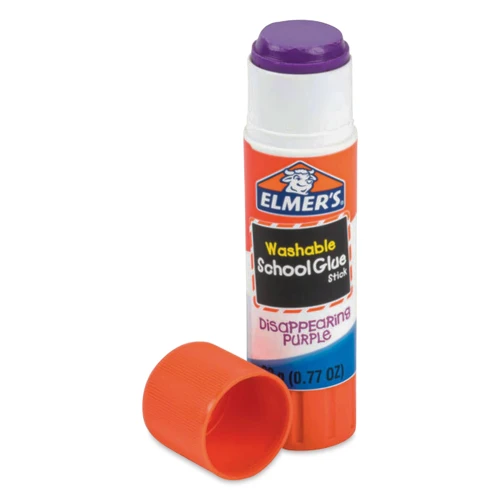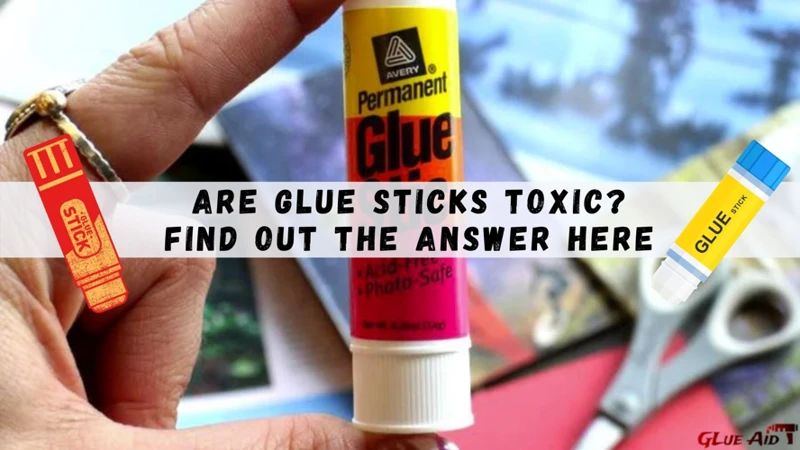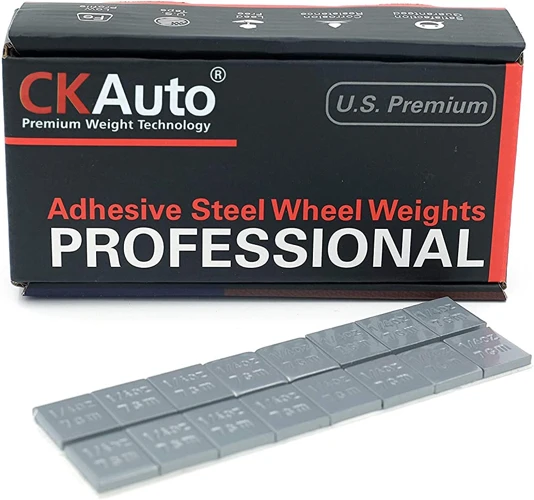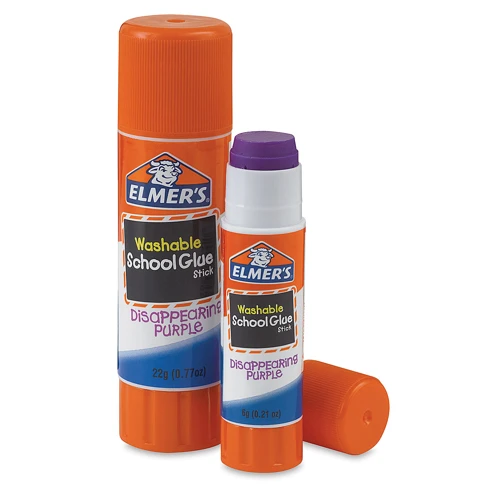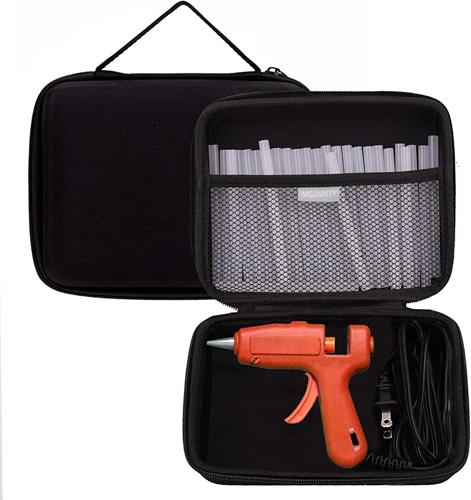Have you ever found yourself wondering just how much a glue stick weighs? It may seem like a trivial matter, but understanding the weight of a glue stick can be important in various situations. Whether you’re using glue sticks for crafting, school projects, or fixing something around the house, knowing their weight can help ensure you’re using the right amount. In this article, we’ll dive into the world of glue sticks and explore their weight, as well as various factors that can affect it. So, let’s grab our scales and get started!
What is a Glue Stick?
When it comes to sticking things together, there are several options available, including tapes, adhesives, and glues. Among these, the glue stick is a popular choice because of its convenience, ease of use, and the fact that it doesn’t make a mess. In this section, we’ll explore what a glue stick is and what sets it apart from other forms of glue or adhesive. Whether you’re a crafter, a student, or someone who frequently finds themselves in need of quick-fix solutions, understanding the makeup and properties of a glue stick can be helpful. So, let’s dive in!
Composition
Glue stick composition can vary depending on the brand, but most commonly it is made up of a mixture of synthetic polymers, wax, and tackifiers. The synthetic polymers used in glue sticks are usually either polyvinyl acetate (PVA) or ethylene-vinyl acetate copolymer (EVA). These polymers are what gives glue sticks their adhesive properties. The wax in glue sticks helps to hold the mixture together, allowing it to be formulated into a solid stick. Finally, the tackifiers in glue sticks help to increase the stickiness of the glue, allowing it to adhere more effectively to a variety of surfaces.
It is worth noting that different brands may include additional ingredients in their glue sticks, such as dyes or fragrances, to make them more appealing or to differentiate them from other brands.
While glue sticks are often compared to other types of adhesives, such as liquid glue or tape, they are not the same thing. Liquid glue, for example, often contains solvents or water that are evaporated as the glue dries. Glue sticks, on the other hand, are designed to be applied as a solid and do not contain solvents or water. This makes them less messy and easier to use for certain tasks.
Fun Fact: Did you know that glue and adhesive are not the same? To learn more about the difference between these terms, check out our article on what is the difference between glue and adhesive.
Size and Shape
Glue sticks vary in size and shape, and each type has its unique weight. Glue sticks are available in mini, standard, and jumbo sizes.
Mini size:
Mini glue sticks are the smallest of the three. They are typically 0.28 inches in diameter and 4 inches long. These smaller glue sticks are very portable, making them perfect for on-the-go projects. Mini glue sticks can be used in small glue guns, and they weigh approximately 0.11 ounces or 3 grams.
Standard size:
The standard glue stick is the most common and widely used size. These glue sticks are typically 0.44 inches in diameter and 4 inches long. They fit in most standard-sized glue guns and have a weight of approximately 0.28 ounces or 8 grams.
Jumbo size:
The largest of the three, jumbo glue sticks are typically 0.88 inches in diameter and 4 inches long. These glue sticks are perfect for larger projects and heavy-duty work. Jumbo glue sticks can be used in large glue guns, and they weigh approximately 1.76 ounces or 50 grams.
It is important to note that the weight of the glue stick can vary depending on its composition and moisture content. Different brands have their weight specifications. For example, some brands might offer slightly larger or smaller glue sticks, resulting in a change of weight.
Knowing the size and weight of a glue stick can help in choosing the right one for a particular application. For instance, when working on small projects, mini glue sticks might be the best choice for their precision.
For more information on the types of glue, their composition and usage, check out our article on /what-makes-glue-work/ or on /what-is-school-glue/. If you want to learn about storage recommendations for glue sticks, check out our article on /how-long-does-elmer-s-glue-last/.
How Much Does a Glue Stick Weigh?
Many of us may have used glue sticks for various purposes such as crafts, school projects, or even repairing items around the house. However, have you ever wondered how much these glue sticks weigh? Knowing how much they weigh is essential information when you need to purchase them in bulk or carry them around. In this section of the article, we will explore the different sizes and weights of glue sticks and the factors that affect their weight. So, let’s dive right in and find out everything you need to know about the weight of a glue stick.
Standard Size
A standard size glue stick is the most common size available on the market. It is typically cylindrical in shape, with a diameter of around 20mm and a length of 100mm. The weight of a standard size glue stick can vary from brand to brand, but on average it weighs between 20-25 grams.
Some of the popular brands and their weights are:
- Elmer’s Glue Stick – 22.8 grams
- Avery Glue Stick – 22 grams
- UHU Glue Stick – 21 grams
- Pritt Glue Stick – 22 grams
It is important to note that the weight of a standard size glue stick can depend on the type of glue used. Some glues may have higher moisture content or more additives, which can increase the weight of the final product.
To ensure that one has the correct size and weight of glue stick for their project, it is important to check the label and packaging of the glue stick before purchasing.
If one is unsure if a standard size glue stick is the correct size for their project, they can always measure the surface area that needs to be glued and compare it to the size of the glue stick.
It is worth noting that the weight of a standard size glue stick does not have a significant impact on its effectiveness. Instead, the quality of the adhesive and its ability to bond surfaces together should be the main consideration when choosing a glue stick.
Still curious about glue sticks? Learn about the different sizes and shapes of glue sticks in our How Big is a Glue Stick article or find out How Long PVA Glue Lasts for storage recommendations.
Mini Size
Mini glue sticks are typically shorter and narrower than standard glue sticks. They are popular with crafters and those who use glue sticks infrequently or require greater precision in their glue application. Mini glue sticks typically weigh around 0.1 to 0.25 ounces, making them significantly lighter than standard glue sticks. They are usually sold in multi-packs and are perfect for small art projects.
Here are some popular brands of mini glue sticks and their corresponding weights:
- Elmer’s Glue Sticks: Elmer’s mini glue sticks weigh around 0.1 ounce each.
- Gorilla Kids Disappearing Purple Glue Sticks: Gorilla Kids mini glue sticks weigh around 0.14 ounces each.
- Scotch Glue Sticks: Scotch mini glue sticks weigh around 0.1 ounce each.
While mini glue sticks may not be suitable for heavy-duty projects due to their small size and low adhesive strength, they are ideal for intricate projects that require precision and careful application.
If you’re interested in learning more about glue, check out some of our other articles:
Jumbo Size
Jumbo size glue sticks are usually larger in diameter and length compared to standard and mini sizes. These sticks are designed for big projects or for people who prefer to buy glue in bulk to save time and money. Jumbo size glue sticks vary in weight from brand to brand, but they generally weigh between 2.0 ounces and 1.55 pounds. Some popular brands that offer jumbo size glue sticks are Elmer’s, Scotch, and Aleene’s.
Advantages of Jumbo Size Glue Sticks:
- They have a larger coverage area which means they require less time and effort to apply on large surfaces.
- They are cost-effective as they offer more glue for the same price compared to standard and mini sizes.
- They are perfect for schools and offices where there is a need for a lot of glue for various projects.
- They come in handy for people who use glue frequently and do not want to keep buying refills every few days.
It is important to note that some glue guns are compatible with jumbo size glue sticks, so it is essential to check the package before making a purchase.
Disadvantages of Jumbo Size Glue Sticks:
- They may be too bulky for small hands to handle, making them unsuitable for children.
- They may not fit in the glue gun or dispenser, making it difficult to use.
- They may take longer to heat up compared to smaller sized glue sticks.
Jumbo size glue sticks can be a great investment for those who frequently use glue for large projects. But it is crucial to consider the advantages and disadvantages before making a purchase.
Factors That Affect the Weight of a Glue Stick
When it comes to the weight of a glue stick, you might be wondering why some are heavier or lighter than others. Many factors can impact a glue stick’s weight, which can also affect its usage and application. Understanding these factors that influence the weight of a glue stick can help you choose the right type of adhesive for your needs and ensure the best results. Let’s take a closer look at some of these factors below.
Type of Glue
The type of glue used in a glue stick can greatly affect its weight. Some glue sticks are made with a synthetic resin that is heavier than others. Additionally, the type of glue can determine the moisture content, which can also affect the weight. Here are a few examples of different types of glue and their weight characteristics:
| Type of Glue | Weight |
|---|---|
| PVA Glue | Lightweight |
| Hot Glue | Heavier due to the gun and cartridges |
| Epoxy Glue | Heavy due to the hardener and resin components |
| Rubber Cement | Lightweight |
As you can see, the weight of the glue stick can vary depending on the type of glue used. It’s important to consider the type of project you’re working on and choose a glue stick with an appropriate weight. For example, if you’re working on a lightweight craft project, a glue stick made with PVA glue may be the best option due to its lightweight composition. On the other hand, if you’re working on a heavy-duty project, a hot glue gun may be necessary, despite the added weight of the gun and cartridges.
Moisture Content
The moisture content of a glue stick can affect its weight. Glue sticks may absorb moisture from the air or the surface it is being applied to. This water can make the glue stick heavier than its actual weight. The moisture content could also affect the glue stick’s gripping ability and strength.
Factors affecting Moisture Content:
- Humidity: High humidity can cause glue sticks to absorb moisture from the air. This can make the glue stick heavier and softer.
- Surface: If the surface where the glue stick is applied is moist or wet, the glue will absorb some of that moisture. This can make the glue stick heavier and affect its bonding strength.
- Storage: Improper storage conditions can cause glue sticks to absorb moisture. Glue sticks should be stored in a cool, dry place to prevent moisture absorption.
It is important to store glue sticks in airtight containers to prevent moisture absorption. If the glue stick does become too moist, it may be best to discard it or dry it out before further use. Air-drying the glue stick can help remove excess water, but this may also affect the glue’s ability to bond. It is important to store glue sticks properly to avoid any moisture issues.
Additives
Additives are additional ingredients that are added to a glue stick to improve certain properties such as strength, flexibility, and drying time, among others. Below are some of the common additives used in creating glue sticks:
| Additive | Properties |
|---|---|
| Resin | Improves bonding strength and adhesion properties of the glue. |
| Glycerin | Makes the glue stick more pliable and flexible. Also, helps prevent the glue from becoming too brittle over time. |
| Waxes | Improves the ease of application and helps the glue stick to bond to a variety of surfaces. |
| Polyvinyl alcohol (PVA) | Enhances the glue’s bonding strength, and dries more transparently than other types of additives. |
| Colorants | Used to give the glue stick its distinctive color, although it doesn’t affect the adhesive properties of the glue. |
It is important to note that not all glue sticks contain additives. Some manufacturers prefer to create glue sticks with a simpler formulation to achieve better bonding strength and fewer potential irritants. Additionally, it is essential to use the right adhesive for the specific material you would like to bond together, as different materials require different bonding strength and additives.
How to Measure the Weight of a Glue Stick?
One important question that often comes up when dealing with glue sticks is how to accurately measure their weight. Whether you are trying to determine the amount of glue left in a stick or simply want to weigh out a certain amount for a project, it is essential to have the right tools and techniques for measuring the weight of a glue stick. In this section, we will explore some effective methods for measuring glue stick weight, including both high-tech and low-tech options. So, let’s dive in and discover the best ways to measure the weight of a glue stick!
Using a Scale
When it comes to measuring the weight of a glue stick, using a scale is the most accurate method. A digital or analog scale can be used to measure the weight of a single glue stick or multiple glue sticks at once, depending on the scale’s capacity.
Step-by-step guide to using a scale:
- Turn on the scale and make sure it is calibrated to zero.
- Place the glue stick(s) on the scale and wait for the weight reading to stabilize.
- Take note of the weight displayed on the scale. It is important to note the unit of measurement used (typically grams or ounces).
- If weighing multiple glue sticks, add their weights together to get the total weight.
Example of a scale measurement:
| Glue Stick Brand | Glue Stick Size | Weight (grams) |
|---|---|---|
| Elmer’s | Standard | 22.5g |
| Gorilla | Mini | 4.8g |
| Aleene’s | Jumbo | 65.2g |
Measuring the weight of a glue stick using a scale can be helpful in many situations, especially when an accurate weight measurement is necessary. For instance, when mailing a package, the weight of the glue stick used to seal the parcel can be weighed along with the package to determine the overall weight.
Estimating Weight
If you don’t have a scale available to measure the weight of a glue stick, you can use the estimated weight method. Keep in mind that this method may have some degree of error, depending on the accuracy of your estimation skills.
To estimate the weight of a glue stick, you need to know its average length and diameter. A standard size glue stick is about 4 inches long and 0.5 inches in diameter.
Here’s an estimation table you can use:
| Glue Stick Size | Average Length | Average Diameter | Estimated Weight |
|---|---|---|---|
| Standard | 4 inches | 0.5 inches | 0.5 oz |
| Mini | 2.5 inches | 0.25 inches | 0.1 oz |
| Jumbo | 6 inches | 0.75 inches | 1.4 oz |
To use the table, find the glue stick size and its corresponding average length and diameter. Then, look for the estimated weight in the last column.
Keep in mind that this is an estimation and the weights might vary depending on the manufacturer or brand. It’s always best to use a scale if accuracy is crucial, especially for projects where exact measurements are necessary.
Uses of a Glue Stick
Glue sticks are versatile tools that can be used for a wide range of projects and tasks. One of the most common uses of a glue stick is for paper crafts, such as scrapbooking or making cards. The adhesive is gentle enough not to wrinkle or damage paper, making it perfect for intricate designs. It is also popular for sticking together paper templates for sewing or cutting, as well as for creating paper mache projects.
Glue sticks can also be used for general crafts and DIY projects, such as attaching beads, sequins, or other small embellishments to fabrics or surfaces. The clear adhesive dries quickly and bonds strongly, making it ideal for creating small decorations or repairing broken items.
In addition, glue sticks are useful for household tasks, such as sealing envelopes, gluing down loose tiles or wallpaper, or temporarily attaching lightweight objects to walls without leaving a mark when removed. They can also be used to reseal packaging or wrap gifts.
Glue sticks are also a popular choice for school projects and assignments, allowing students to quickly and easily stick together paper or cardboard without the mess or potential hazards of liquid glue.
The uses of a glue stick extend far beyond just paper crafts and can be beneficial for a variety of projects, both big and small.
Different Brands and Their Weights
When it comes to glue sticks, there are various brands available in the market, each with its own unique characteristics. Elmer’s Glue Sticks, for instance, are a popular choice for crafting and school projects. They come in both standard and mini sizes, with the standard size weighing around 0.21 ounces and the mini size weighing around 0.07 ounces.
Another well-known brand is Avery Glue Stick, which is widely used for school projects and other DIY projects. They come in various sizes such as standard, jumbo, and mini, with the standard size weighing around 0.26 ounces, the jumbo size weighing around 1.27 ounces, and the mini size weighing around 0.1 ounces.
If you’re looking for a strong adhesive, Gorilla Kids Disappearing Purple Glue Stick might be a great option. This glue stick goes on purple for easy visibility but dries clear, making it great for arts and crafts. According to the manufacturer’s website, the Gorilla Kids Disappearing Purple Glue Stick weighs around 0.77 ounces.
Other popular glue stick brands include AmazonBasics, UHU, Scotch, and Tombow, among others. Each of these brands offers unique features and benefits and comes in different sizes and weights to suit different project needs.
It’s important to note that while the weight of a glue stick is a factor to consider, it’s not the only factor. The quality and type of glue, as well as the size and shape of the glue stick, should also be taken into account when choosing a glue stick for your project needs.
How Long Does a Glue Stick Last?
The lifespan of a glue stick largely depends on a number of factors, including the frequency of use and the size of the glue stick. However, most standard glue sticks can last for up to two years with proper storage and usage.
Composition
The composition of a glue stick can also affect its longevity. Glue sticks made from organic materials, such as animal or plant-based adhesives, tend to have a shorter shelf life compared to synthetic adhesive sticks.
Frequency of Use
The more frequently a glue stick is used, the faster it will run out. If you use a glue stick regularly, you may find that you need to replace it more often than someone who uses glue sticks infrequently.
Size of Glue Stick
Smaller glue sticks, such as mini or travel-sized sticks, may not last as long as standard-sized ones. This is because they contain less glue, meaning they will run out more quickly.
Storage Conditions
Proper storage can also extend the lifespan of a glue stick. Glue sticks should be kept in a cool, dry place and away from direct sunlight or heat sources. Excess heat can cause the adhesive to melt, making it less effective when in use.
Usage Tips
To make the most out of your glue stick, it’s important to use it correctly. One tip is to avoid using too much glue when applying it. Not only does this waste glue, but it can also make the glue stick run out faster. Another tip is to avoid leaving the cap off for too long, as this can cause the glue to dry out.
The lifespan of a glue stick can vary depending on multiple factors. By using and storing it properly and following the above tips, you can extend the life of your adhesive stick and get more bang for your buck.
Storage Recommendations for Glue Sticks
Proper storage of glue sticks is essential to ensure that they retain their adhesive properties for a long time. The ideal temperature for storing glue sticks is between 18°C and 25°C (64°F to 77°F). It is best to keep them away from direct sunlight and heat or cold sources, as this can cause the glue to melt or harden. Exposure to high temperatures can also lead to the evaporation of the glue, reducing its bonding strength.
When it comes to humidity levels, it is recommended to store glue sticks in a dry area. Humidity can cause the glue to absorb moisture, leading to a reduced adhesive strength.
Storing glue sticks upright is also important, as this helps to prevent air from entering the container and drying out the glue. Airtight containers are the best for storing glue sticks, as they prevent air from getting in.
It is also important to keep the glue sticks out of reach of children, as they can be harmful if ingested. To prevent this, you can store them in a separate drawer or cupboard that is not accessible to children.
Lastly, make sure to check the expiry date on the packaging before using a glue stick. Expired glue sticks may not work effectively and could even cause damage to the items you are trying to glue together.
By following these storage recommendations, you can extend the shelf life of your glue sticks and ensure that they remain effective for all your adhesive needs.
Environmental Impact of Glue Sticks
When it comes to crafting and DIY projects, glue sticks are commonly used due to their convenience and ease of use. However, many people are unaware of the environmental impact that these seemingly harmless adhesive tools can have. From their disposal to their production, glue sticks can contribute to various environmental problems. It is important to understand the impact of glue sticks on the environment so we can make informed decisions about their usage and disposal. Let’s take a closer look at the ecological footprint of glue sticks.
Disposal
When it comes to disposing of used glue sticks, it’s important to be mindful of the impact they can have on the environment. Here are some tips for responsible disposal:
- Check Local Guidelines: Before disposing of your used glue stick, it’s important to check your local guidelines. Some areas have specific rules and regulations for disposing of certain types of waste, including glue sticks. Make sure you follow these guidelines for responsible disposal.
- Throw Away in Trash: In general, you can dispose of a used glue stick by simply throwing it away in the trash. However, make sure it is properly secured in a plastic bag or container so it doesn’t create a mess or damage the garbage bag.
- Avoid Flushing: It’s important to always avoid flushing glue sticks down the toilet or sink. Not only can this cause blockages that are expensive to fix, but it can also harm the environment if the glue stick ends up in our rivers and oceans.
- Recycle the Container: Many glue sticks come in plastic containers that can be recycled. Make sure to remove any leftover glue before recycling the container. Check with your local recycling center to ensure they accept the type of plastic your glue stick container is made of.
By following these simple steps, you can ensure you are disposing of your used glue sticks in a responsible and environmentally-friendly way. Remember, small actions can make a big difference and help keep our planet healthy for generations to come.
Recycling
Recycling glue sticks is an excellent way to reduce waste and help the environment. Unfortunately, recycling options for glue sticks are limited as they are not typically accepted in curbside recycling programs.
However, there are some options for recycling glue sticks:
- Terracycle: Terracycle offers a Zero Waste Box program where individuals and businesses can purchase a box to fill with used glue sticks and send back to Terracycle for recycling.
- Local Recycling Events: Many communities hold special recycling events throughout the year where unusual items, such as glue sticks, may be accepted for recycling.
- DIY Recycling: If you’re feeling crafty, you can try melting down old glue sticks to create new crafting projects.
It’s important to note that before recycling glue sticks, they should be separated from any paper or plastic packaging that may have come with them. The packaging can often be recycled separately through local recycling programs.
Recycling glue sticks may not be as common as recycling other materials, but every effort to reduce waste and help the environment counts. Consider these options for recycling your used glue sticks to make a positive impact.
Conclusion
In conclusion, a glue stick is a versatile adhesive that comes in various sizes, shapes, and weights. It is a convenient and easy-to-use tool for bonding different materials, from paper to fabrics and plastics. However, it is important to select the right size and weight of the glue stick depending on the project’s requirements and the tool’s handling capabilities.
While the standard size is the most common and widely used, some projects may require a larger or smaller size. The mini size is ideal for small projects, while the jumbo size is suitable for larger surfaces. Moreover, various factors can affect the weight of a glue stick, such as the type of glue, moisture content, and additives.
For accurate weight measurement, it is recommended to use a scale, especially when working on critical projects. However, it is possible to estimate the weight of a glue stick, especially if you are familiar with the product’s characteristics. Additionally, different brands offer different weights and compositions, and it is essential to choose the one that fits your needs.
Lastly, glue sticks have a significant impact on the environment, and proper disposal and recycling are recommended to reduce their negative effects. By following storage recommendations and disposing of glue sticks correctly, we can minimize their environmental impact and promote sustainable practices.
Overall, the glue stick is a valuable tool in any modern adhesive kit, and by understanding its different characteristics, uses, and weights, we can use it more effectively and responsibly. Remember to select the right size and weight, use a scale for accurate measurement, and dispose of glue sticks correctly to help preserve our environment.
Frequently Asked Questions
1. Can glue sticks be reused?
While some people might try to reuse a glue stick, it’s not recommended. Once the glue has been used, it’s likely to have picked up dust and other particles, making it less effective the next time around.
2. Can glue sticks be used on all materials?
No, glue sticks are not appropriate for all materials. While they work well on paper and cardboard, they might not be effective on more heavy-duty materials like metal or plastic.
3. Are glue sticks safe for kids to use?
Glue sticks are generally considered to be safe for kids to use. However, it’s important to supervise young children to make sure they don’t accidentally ingest the glue or get it on their skin or other parts of their body.
4. How do you remove glue stick residue?
If you have glue stick residue on your hands or a surface, you can try rubbing alcohol, vinegar, or oil to remove it. For fabrics, carefully scrape off as much of the glue as possible and then wash the fabric as normal.
5. Can glue sticks expire?
Glue sticks can expire if they are not stored properly. Look for an expiration date on the packaging and make sure to keep the glue stick in a cool, dry place.
6. Can glue sticks be used for arts and crafts?
Yes, glue sticks are a great choice for arts and crafts projects because they are mess-free, easy to apply, and dry quickly. They’re especially useful for paper-based projects like scrapbooking and card making.
7. Are there eco-friendly options for glue sticks?
Yes, there are eco-friendly glue sticks available on the market. Look for options made from natural, non-toxic ingredients that are safe for both people and the environment.
8. Can glue sticks be used for woodworking?
No, glue sticks are not appropriate for woodworking. Instead, opt for a wood glue specifically designed for this type of job.
9. How do you store glue sticks?
Store glue sticks in a cool, dry place away from direct sunlight. Make sure to keep the lid on tightly to prevent the glue from drying out.
10. Can glue sticks be used to glue plastic?
While glue sticks might work for some types of plastic, they are not ideal. For a more permanent bond, use a plastic-based adhesive or a glue designed specifically for plastic.
